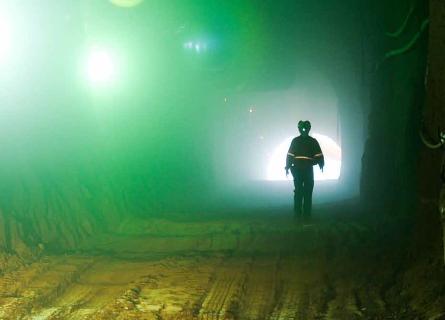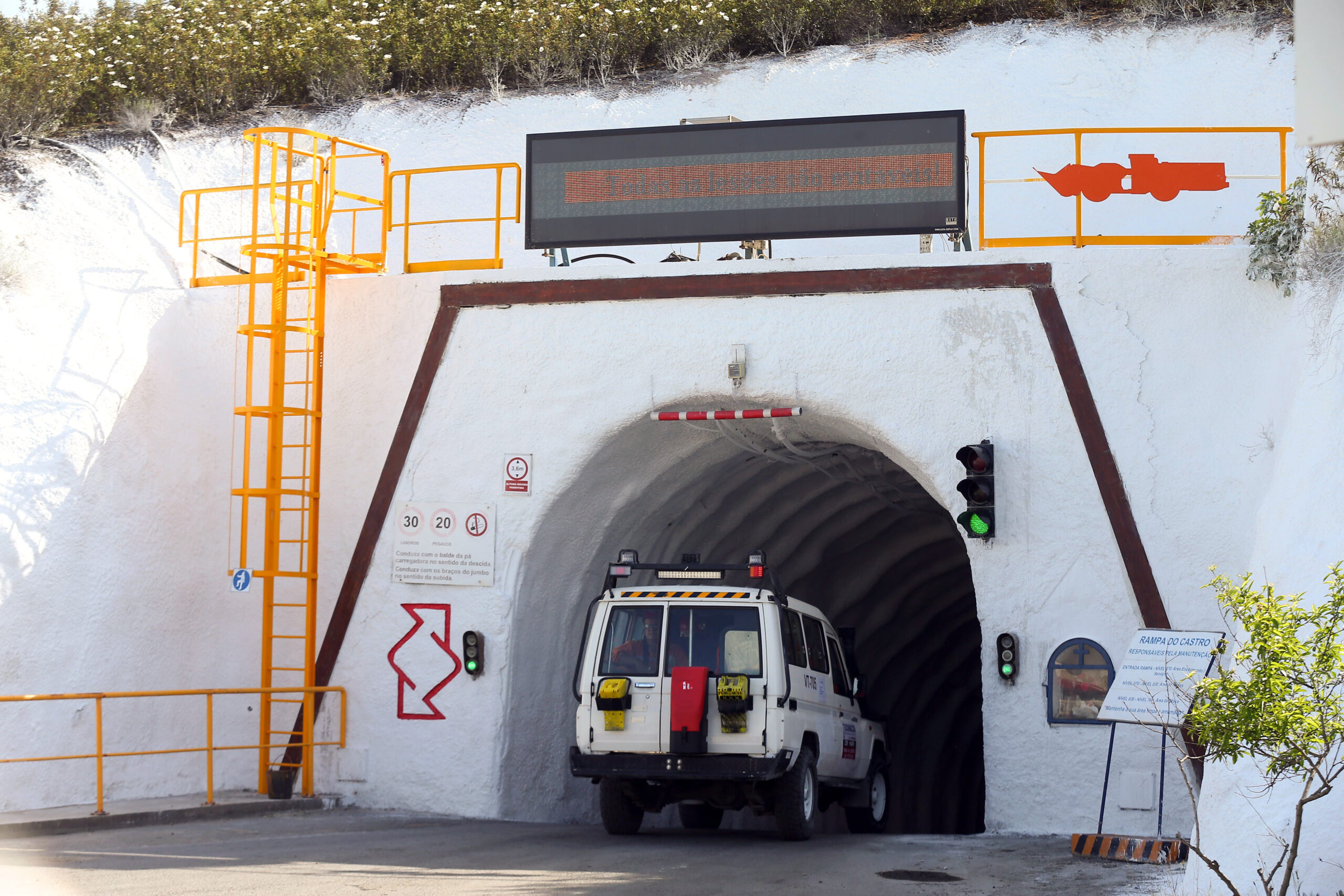
Colossus Minerals is on the brink of gold, platinum and palladium production at Serra Pelada in Brazil’s northern Pará State: this is one of the highest grade deposits in the world, fully funded and permitted for production in 2013. For the investor, gold projects don’t come much better than this.
Brazilian gold bankrolled the expansion of the Portuguese empire from the time Pedro Cabral hit the coast in 1500, so the discovery and extraction of Brazil’s gold rich ore deposits is nothing new. However, even the most recent gold rush in the 1980s, concentrated at Serra Pelada following a chance find in 1979, failed to make a deep impact on that reserve. Only so much extraction can be done by manual labour: nevertheless the garimpeiros or artisan workers left a substantial hole and extracted more than two million ounces before the mine was allowed to flood, driving them away. Subsequently it was further explored by the country’s major commercial mining company Vale do Rio Doce (CVRD), now known as Vale, which explored the region from 1980 to 1998.
During that period the previously inaccessible area was provided with the essential infrastructure for mining, including roads, a rail line and power supply. Vale held the underlying title to Serra Pelada until 2007, when an exploration licence was granted to Cooperativa de Mineração dos Garimpeiros de Serra Pelada (COOMIGASP), a registered Brazilian cooperative company made up from the original garimpeiro miners. In 2007 the relatively unknown junior Canadian mining company Colossus Minerals came in under the noses of less adventurous majors to bring off the coup of securing a joint venture with COOMIGASP to develop the resource that remained hidden southwest of the original open pit.
Colossus’s strength lies in its people. Founder and chairman Ari Sussman put together a strong team with extensive experience in the industry and a wealth of knowledge of South America. The current team is headed by president and CEO, Claudio Mancuso, who joined the company in March 2011 after a nearly 10 year career at Agnico-Eagle Mines Limited. The company recently strengthened its operating team with the addition of chief operating officer, Paulo Fagundes, a Brazilian national who worked in Pará for decades prior to moving abroad to build mines for Yamana Gold Inc. Hosting gold and PGMs, Serra Pelada is one of the most geologically unique ore bodies in the world. As such, one of the most important members of the team is senior vice-president, exploration, Vic Wall, whose geological reinterpretation of Serra Pelada has helped Colossus extend known mineralization as well as discover new zones on the Serra Pelada property. Mr. Wall has been involved in the discovery of many deposits and was a co-winner of the Goldcorp Challenge in 2001.
With a 75 percent interest, Colossus is the operator of the project, explains Mancuso. “COOMIGASP has helped us obtain social acceptance for this project. They are very good at helping us communicate with local stakeholders as well as navigating through the political landscape and the bureaucracy of the various levels of national, state and local governments.” All the necessary environmental and mining permits are in place, Mancuso reports.
Commercial production is not much more than a year away. First gold will be produced in the first half of 2013. Approximately 800 metres of the projected 3,500 metre decline that gives access to the ore body is already completed: “We will reach the top of the deposit once the ramp reaches approximately 1,300 metres at which time we intend to mine a bulk sample in order to better understand grade distribution before we get to production,” says Mancuso.
One of the beauties of this project is its low risk. Not only is it located in one of the most mining-friendly countries in the world, in a region that ishost to major deposits of iron ore, copper-gold and manganese, but it isring fenced from fluctuations in global metal pricing. Ann Wilkinson, Colossus’ vice-president, investor relations commented, “A lot of operators have been drawn to gold projects by the current high price, opening either underground mines with high per ounce extraction costs or large tonnage, low grade open pits. One could easily argue that if the price dipped significantly a lot of these would cease to be viable. Serra Pelada is one of the few projects arguably economic under almost any gold price environment.”
Even before by-product credits, the cost of extracting the gold is expected to be within the lowest quartile globally in terms of dollars per ounce. Cash costs could well be zero, offset by the record grades of platinum and palladium that are also present in the mineralization and which will be processed at the same time as the gold. Metallurgical testing is currently underway to determine the optimal method for extracting the platinum and palladium and other platinum group metals using flotation. Processing is relatively straightforward. Since the deposit is fully oxidized, most of the gold will be recovered using simple gravity processing. Flotation will recover the remaining gold and most of the PGMs The ore body is being developed using a decline as the deposit is a relatively flat structure, explains Mancuso. “The ore body plunges in a south west direction at about 15 degrees, and at its highest point it is approximately 100 metres below the surface with its deepest approximately 350 metres vertical.”
The processing plant will be close to the entrance to the mine and will be complete by the end of 2012, that is to say well ahead of any gold ore coming out of the ground, he continues. The ball mill is already on site and most of the remaining equipment can be sourced within Brazil, he says. Earthworks for the mill and site infrastructure like camp accommodations and an industrial warehouse are largely complete already, and the mill buildings will be erected from the first quarter of 2012.
Outside of the established mineralized zone, the joint venture has secured rights over 774 hectares of land. Though not a great deal of drilling has been carried out thus far, geochemistry has established what Claudio Mancuso calls some very promising targets for the coming year. “We expect this to be a successful exploration programme,” he says.
During the construction and exploration phase the mine employs around 400 people directly: this will come down to about 300, mainly recruited from the nearby towns of Parauapebas and Curionopolis, which have a combined population of some 200,000. There is a skilled workforce available locally thanks to the long mining tradition in the Carajas region: those who do not have their home in the region are accommodated at the on-site camp, where Mancuso, one of the most hands-on CEOs in the business, is a frequent visitor. “Skilled people from all over the world are attracted to Serra Pelada because it is the most exciting gold development there is,” he says. “However, most of the workforce is Brazilian as we employ people from local communities and provide necessary training on-site.”
The Canadian company has taken every step necessary to forge good relations with the local community and the authorities in Brazil, funding education, training and literacy programs and sponsoring sporting and cultural activities in the area. Mancuso says Colossus has already had approaches from other potential garimpeiro partners keen to get involved with Colossus in future projects in Brazil, but for now bringing Serra Pelada into production will be more than enough to keep him and his colleagues fully occupied.
DOWNLOAD
 Colossus-NA-Jan12-Bro-s.pdf
Colossus-NA-Jan12-Bro-s.pdf













